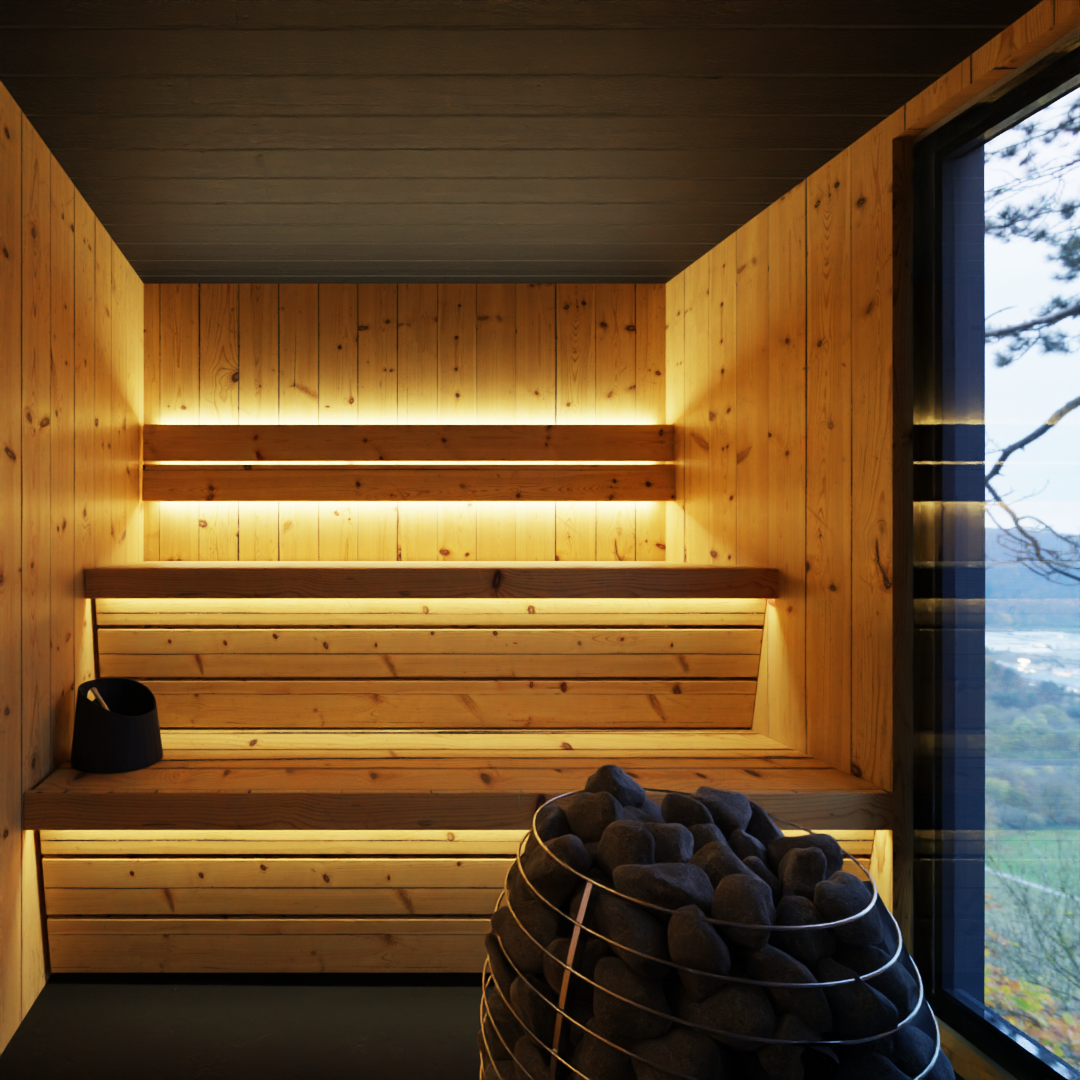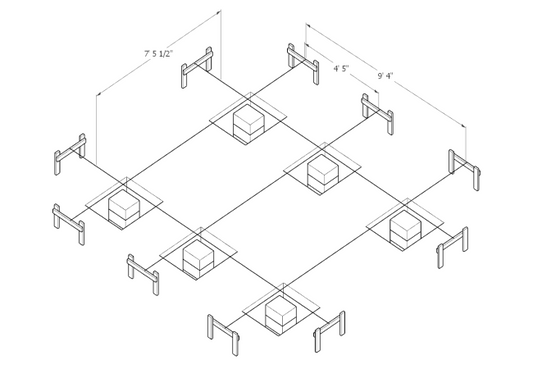
7 Most Common Mistakes When Building a Sauna
Below, we compiled a list of the most common mistakes people make when building their own sauna retreat. If you manage to avoid these mistakes, your sauna experience will be better, and sauna will last longer.
1. Lack or wrong type of isolation used in the sauna
One of the most common mistakes when building a sauna is the lack of insulation.
A ready-made barrel-type sauna can be bought for as little as a couple of thousand dollars, unfortunately, we know from our own experience that it can be difficult to get a sufficiently high temperature during a sauna session (above 70 degrees C) in winter. Most often, such saunas do not have any insulation at all.
In a garden sauna, you should use mineral wool (rock or glass), preferably 100mm thick. Mineral wool is resistant to high temperatures, so it is ideal for saunas.
It is not a good idea to use Styrofoam to insulate an outdoor sauna. Styrofoam is not resistant to high temperatures, and can emit harmful gases when subjected to high temperatures.
2. Lack of proper ventilation in the sauna
The second most common mistake, is improper ventilation. Ventilation in a sauna is designed to exchange used up air for fresh air. When you are in the sauna, the level of carbon dioxide (CO2) increases, and with each session there is more and more carbon dioxide in the sauna air.
More often than not, it is CO2 that makes us feel uncomfortable and for this reason we finish sauna bathing prematurely. Proper ventilation in the sauna allows air exchange so that the amount of carbon dioxide in the sauna does not exceed 800ppm. For the reference, in the atmospheric air, there is about 400ppm od Carbon dioxide.
For more on ventilation, read our article Ventilation in the sauna
3. Improper materials inside the sauna
The materials used inside the sauna are important, because they give the sauna a proper feel. The interior of the sauna should be clad in wood, with as few knots as possible.
When choosing the type of wood, it is a good idea to choose types of wood that grows locally - this way we can minimize the carbon footprint of our sauna. Local, familiar types of wood such as Aspen or Alder are just as aesthetically pleasing as exotic types of wood, such as Abachi, but do not have to be imported from distant countries.
4. Sauna Stove of the wrong power
A stove which is too small for the sauna it occupies, can cause the sauna to take a very long time to heat up, or can cause the sauna to not reach the set temperature inside at all. The power of the sauna heater, should be calulated taking into account the volume of the sauna, and the amount of glass in the sauna.
A simple formula for selecting the power of the sauna heater:
1m3 = 1 kW
For example, for a sauna with dimensions of 2 x 2 x 2 m = 8 m3, the appropriate power of the sauna stove is a minimum of 8 kW.
If you have any glazed surfaces in your sauna like windows or doors, you should increase the power of the furnace: 1 m2 of glazing= 1 kW of additional stove power.
For more on the selection of a sauna heater, read our article: Sauna heater guide
5. Sauna benches placed too low
The top bench in the sauna, should be placed at a height of 120 to 100 cm from the ceiling. This distance allows you to make the best use of the heat and steam that collects in the upper half of the sauna. If sauna benches are placed too low, the perceived temperature is significantly lower.

Height of Sauna Benches
The maximum distance of the upper bench from the ceiling should be 120cm.
6. Lack of proper changing room
Many times I happened to be in an outdoor barrel type sauna, in which the changing room was about 60cm (23in) wide. Such a small changing room in the sauna allows only one person to change and enter the sauna, so using the sauna with the whole family or a group of friends can be difficult. Of course you are not going to change clothes with other people in the room ( probably) but changing room is also used to rest between the sauna sessions.
A comfortable sauna changing room should be at least 1 m2 per person. In our Tuula garden sauna project, the changing room is 2 x 3 m, which allows you to use the changing room also as a rest area.

7. Poor sauna design
The design of the sauna as well as it's construction is very important. If you are thinking of building a sauna yourself, a good design will ensure that your sauna, once built, will be exactly what you dreamed of, and all important requirements will be met. Of course, professional construction of the project is also important.
Our Tuula Garden Sauna project was designed by an experienced architect and sauna enthusiast. Dozens of hours were spent on fine-tuning all the details, drawings, as well as reading sauna blogs and books, especially from Scandinavian countries.
If you want a complete project then our designs are for you. If you don't want to spend hours exploring how to design a sauna, what materials to choose, what stove or ventilation will be appropriate, if you want a well-designed sauna that is not only functional but also looks great, then you are in the right place!




2 comments
Świetnie, takich informacji szukałem. Dziękuje za podzielenie się doświadczeniem!
Dziękuję za możliwość zapoznania się z Państwa radami . Państwa doświadczenie pozwoli mi bardziej świadomie zbudować moją wymarzoną saunę. Jeszcze raz dziękuję .